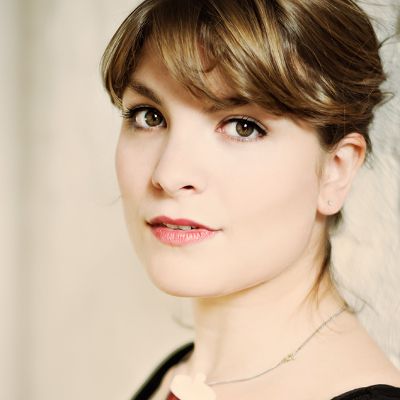An impassioned evening of Beethoven was drawn from the fingertips of the fascinating young pianist Shuann Chai last Wednesday in Utrecht’s Vredenburg Leeuwenbergh. Presenting three of Ludwig van Beethoven’s most well-known sonatas for piano, the Pathétique, Moonlight, and Appassionata, Ms. Chai wove an intriguing and constantly changing musical soundscape.
Allowing her playing to speak for itself, Chai took to the stage in a truly humble yet fresh way. Her touch on the keys gave an impression not only of clear artistic ownership of the repertoire but also a sensitive grasp on the resonance of the strings in the instrument. The first two sonatas on the program, the Pathétique and the Moonlight, were written roughly two years apart, when Beethoven was new to the Viennese music scene. These represent the gems of his most well-known melodies but also reflect the angst ever-present in a youth in his late twenties.
One of the most impressive aspects of the evening for me was to experience just how eloquent and well-versed Chai is in her chosen field. Graciously taking the microphone after her interpretation of the Pathétique, she shed some human light on the highly complicated and moving passages we had just heard. Drawing a bit from history but also from letters and personal accounts, the audience was able to place Beethoven into the concert just as much as the soloist was presented. With absolute grasp and control of her own knowledge, Chai illuminated some of the reasons behind Beethoven’s character, which went far beyond his emerging deafness. In fact he gave credit for his creative process to the tumultuous romantic relationships he endured time and again. A lovestruck Beethoven was indeed a productive Beethoven!
This night could be regarded as a showcase of two entities, Ms. Chai and the instrument she played. The Rosenberger fortepiano dates back to 1820 and was made available thanks to the Dutch “Nationaal Muziekinstrumenten Fonds”. An organization dedicated to the preservation and availability of “original” instruments, the NMF’s support of this instrument served to show just how special Beethoven’s music can sound when played on an instrument made during the composer’s lifetime. During her demonstrations at the piano, Chai demonstrated the five (yes, five!) pedals on the instrument, one of which was called the “Turkish stop”, which clanged with bells which struck. Imagine Mozart’s Rondo alla Turka with this little delight blaring away! Such delicacies were eventually lost in the construction of pianos throughout the course of the 19th century. However, with preservation of original instruments we are able to experience sonorities from generations past in a clear and vivid setting.
The final work on the program brought our newly formed composer knowledge to life with our lovely soloist. Explaining to us that this particular work was written about seven years after the first two, Chai made it clear just how much had changed in the personal and work life of this beloved composer. No longer content with the gracious and supple melodies which opened his earlier works, Beethoven built the exposition into octave statements of fury accelerating the tension to seemingly insurmountable odds. Yet Ms. Chai climbed the mountain Beethoven wrote down, showing us the chaos and frustration present at this point in his life.
Shuann Chai has embarked on what many are calling an ambitious feat. She plans to perform each of Beethoven’s 32 piano sonatas in concert during the 2013–14 season. On paper it seems like a drastic measure and surely listening to any of these sonatas taxes even the most patient and earnest of listeners. But after hearing for myself just how proficient and smoothly Ms. Chai swells with emotion and commands musical respect, I am confident this ambition is suited for her.
Definitely an artist to keep an eye on for the future, Shuann Chai captivates her listeners while giving them a real concept of the music she plays. She takes care to explain why things sound the way they do and is passionate about the particular kind of instrument she plays.


